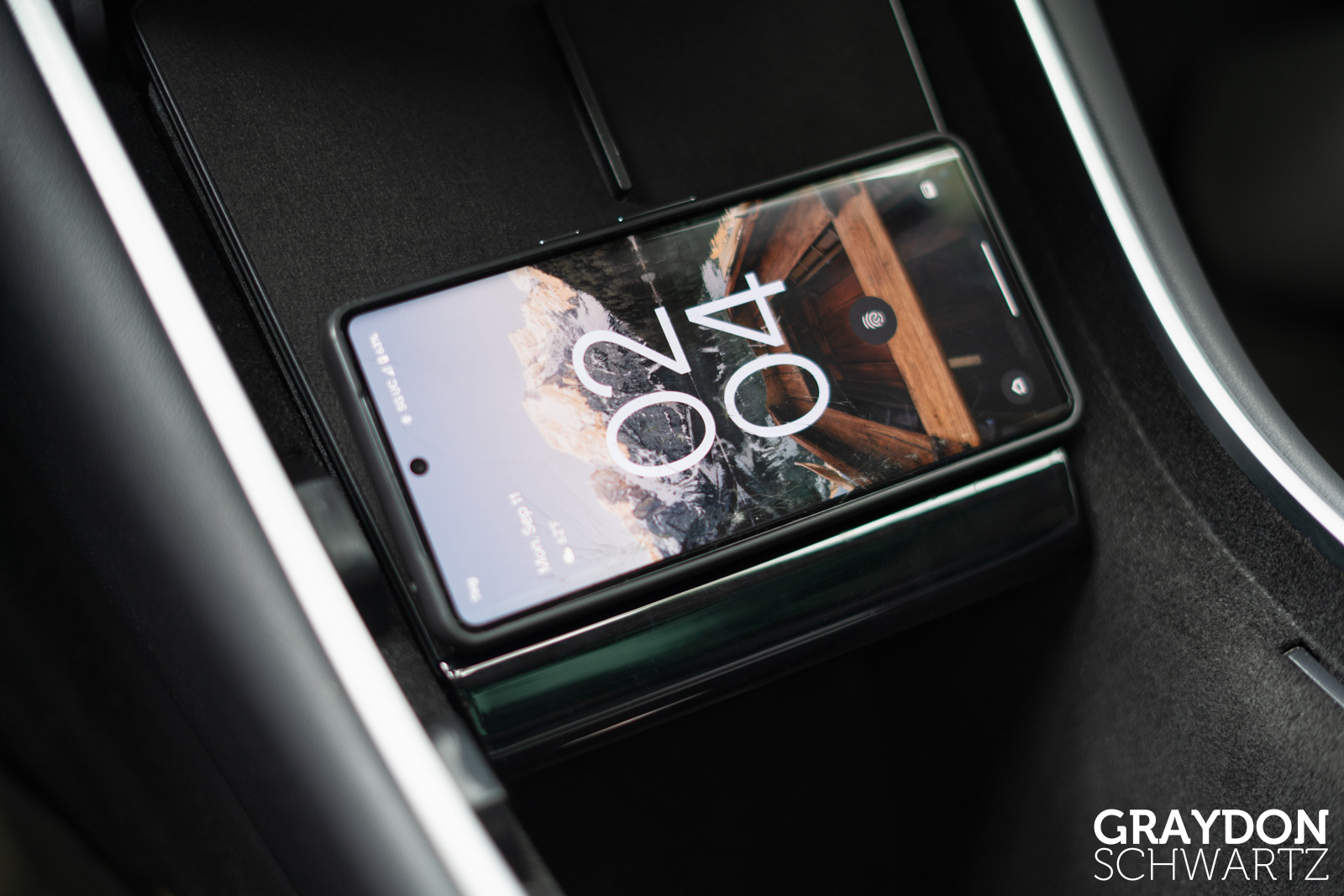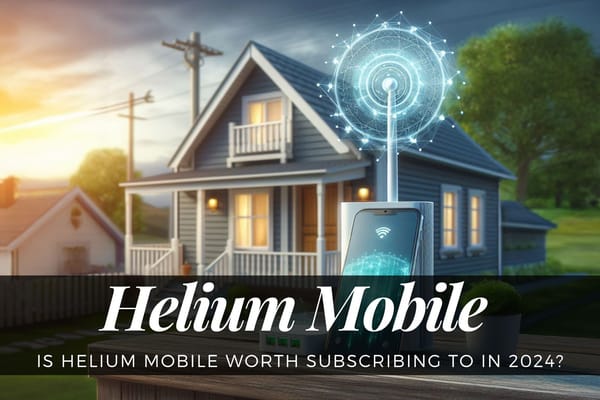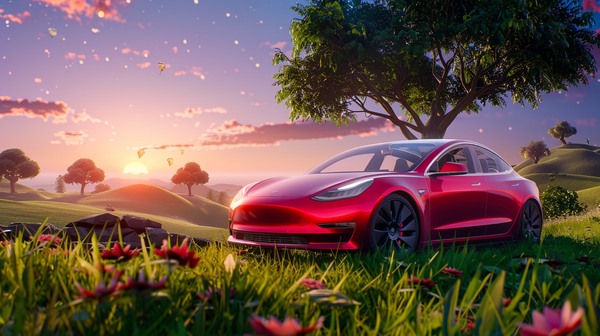Jeda Wireless Charging Pad V4 Review with Pixel 8/7 Pro 2023

Upon unboxing the Jeda Wireless Charging Pad V4, the sleek design immediately caught my attention. Its aesthetics seemed to promise a seamless integration with my car’s interior, and as a tech enthusiast, that’s something I always appreciate. Here’s a brief rundown of my experiences with the Jeda Wireless Charging Pad V4 Review:
I’ve had my fair share of experiences with wireless chargers, but with the Pixel 8 Pro being one of the latest devices in my collection, I was particularly curious to see how it would fare with Jeda’s latest charging iteration. After all, a good product isn’t just about design but performance as well.
So, without further ado, let’s dive deep into my hands-on experience with the Jeda Wireless Charging Pad V4, analyzing its efficiency, compatibility, and overall user experience.

Jeda Wireless Charging Pad V4 | Tesla Model 3 and Model Y Wireless Phone Charger
The Jeda Wireless Pad V4 is the best wireless phone charger designed for your Tesla Model 3 and Model Y and equipped with exclusive features.
- Charging Speeds: Optimal 7.5-15W charging speeds
- MagSafe Compatible: Ideal for MagSafe phones and cases
- Headphone Charging: Charge your AirPods magnetically
- Three-Way Charging: Vertical and horizontal charging
- Small and large phone clearance: All phone models compatible
- OEM wired charging option: Wired charging adapter included
- Enhanced PCB electronics: Reactive 3-way charging
- Alcantara Finish: A durable finish which is scratch-resistant
Jeda Wireless Charging Pad V4 Installed

Back of Jeda Wireless Charging Pad V4

Jeda Wireless Charging Pad V4 Review
Charging Speeds: In the 2019 Tesla Model 3, the wireless charger’s speed varies depending on where you plug it in. If you use the USB ports under the infotainment center, you’ll get a 7.5-watt wireless charging. But, if you connect the charger to two 15W USB ports from the 12V cigarette lighter, you can achieve up to a 15-watt wireless charging.
Short Drives: On a brief 5-minute journey with my Google Pixel 7 Pro, the battery percentage modestly increased from 50% to 51%. A subsequent 15-minute drive resulted in a climb from 50% to 52%. The charger’s pace is evidently not the quickest, but it might be more effective on extended commutes.
Convenience: One of the undoubted perks of this device is the simplicity of dropping your phone onto the pad and having it start charging immediately. This effortless action provides a touch of luxury every time.
Longer Drives: For a comprehensive test, I embarked on a 20-minute drive using Google Maps on my Google Pixel 7 Pro since my Tesla’s built-in navigation was having an off day. Even with the phone screen continuously lit, the battery ticked up from 62% to 63%. It’s evident that the charger, while not super speedy, manages to hold its ground, especially when the phone screen is constantly in use.
Upcoming Tests: In the future, I’m eager to see how the charger fares when I activate the mobile hotspot on my Google Pixel 7 Pro while the screen remains on. This should give us further insights into its performance.
Niggles: A recurring issue that’s hard to ignore is the intermittent lighting up of my Google Pixel 7 Pro’s screen during drives. This becomes particularly bothersome during nighttime. Besides being a distraction, it’s a safety concern that can’t be overlooked. I’m beginning to suspect interruptions in the charging process. A deeper dive is needed to ascertain whether this glitch is inherent to the charger’s design or if there’s an external factor at play.
Testing Wireless Speed with Ampere
I tested the charging speed on my Google Pixel 7 Pro, which has a large 5000 mAh battery. The fastest charging speed I noticed was 1700ish mA, but it often dropped to even below 1700 mA. To give you some context, 1700 mA is actually pretty decent, especially when we’re talking wireless charging.
Sure, it’s not the blazing-fast speeds some wired chargers promise, but it’s solid for keeping the juice flowing. I’m now eager to see how the charger fares with other phones. Keep your eyes peeled for my upcoming test with the iPhone to see how it stacks up.
Now, I bet some of you might be scratching your heads, thinking, “What on earth does 1700 mA even mean?” Let me break it down.
The term “mA” is shorthand for milliamps. When we talk phone charging, it’s all about how much juice the charger can pump into your phone’s battery within an hour. For our big boy, the Google Pixel 7 Pro with its beefy 5000 mAh battery, a charge rate of 1700 mA would ideally mean it’s getting roughly 34% of its battery life topped up in an hour. Not bad, right?
But here’s the kicker: charging isn’t as straightforward as it sounds. Batteries tend to guzzle up power faster when they’re on the emptier side, and as they fill up, they start to sip on that power more slowly. It’s kind of like how we chug down the first half of our drink when we’re super thirsty and then gradually slow down as we get closer to the bottom.
And, just like how sometimes we can’t finish that drink because we’re distracted or full, our phone’s charging speed can get affected by other factors. Using your phone while charging or if the phone decides to throw a little temperature tantrum can make the charging go a tad slower.
So, even though 1700 mA sounds like it’s doing the job, by today’s fast-charging game standards, it’s kind of middle-of-the-road. For our Pixel 7 Pro with its massive 5000 mAh tank, a charger dishing out 2A (that’s 2000 mA for the uninitiated) or even more would be the real MVP. But remember, folks, always double-check compatibility. We want our devices juiced up, not messed up.
Conclusion
In conclusion, while the Jeda Wireless Charging Pad V4 offers undeniable convenience, its slow charging rate and the periodic screen light-up issue make me wish for improvements. If you’re looking for a device that maintains your phone’s battery during drives, this might be a fit. However, for rapid charging, you might want to explore other options for Android devices.
If you’ve been following my previous reviews, you’ll know that I’ve delved into several Jeda products tailored for Tesla vehicles. In my “Jeda USB Hub for Tesla Model 3 Review“, I explored the convenience and functionality of their USB hub solution.
Likewise, the “Tesla Tray by Jeda – How to Maximize Space in Your Tesla Model 3 & Model Y” gave insights into making the most of the limited space in your Tesla vehicle.
And of course, who can forget the deep dive into data storage with the “Jeda SSD for Tesla Model 3 & Model Y Review“? Each product underscores Jeda’s commitment to enhancing the Tesla experience, even if there are areas of improvement in some of their offerings.



